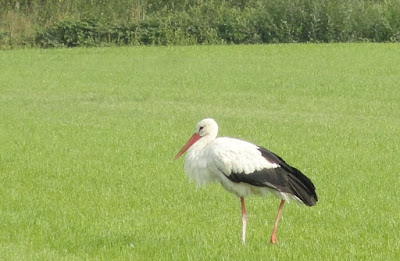The Shama is not a bird which many of us have seen or heard. It is supposed to have a very melodious call and was much favored as a song-bird in the Far-East. I cannot comment on its call as I haven’t heard the bird song myself, although I had a lucky sighting in the - once remote - woods near Ganeshpuri.
This is something to ponder on: Are we destroying the very places that we long to live in?
Humans, as we know, are the most adaptable of all living creatures. We can adapt to any type of environment or weather condition; current technology has the capability to modify our dwellings to comfortable zones regardless of unfavorable external surroundings. We have intruded into every remote and isolated regions of the country. In the absence of effective regulations against environmental degradation and sustainable development, more and more people with disposable incomes invest in second homes (flats / bungalows / row houses) in the midst of natural surroundings. In doing so, we intrude into the habitats of the wild creatures, destroying the environment, causing deforestation and pollution.



The above sighting of Shama was in woods surrounding the village of Mr. Anand V. Patil. It is a small village of about 100 people, located off the Bhiwandi-Wada road. A single lane road, branching out from a traffic junction about 30km from Bhiwandi, leads to a bridge across the Tansa river, beyond which lies the tiny settlement. Every monsoon, there are at least two occasions when the village remains cut-off from civilization, as the river flows above the bridge and there is break-down in electricity supply.
It is a remote place.
But, this village has also attracted the city builders and investors who have built large homes here. A small township has also been planned. I have not named the village, but there are hundreds of such instances in India.



The
impact of such unchecked development can never be estimated. It can cause loss of
native plant and tree species and lead to loss of habitat for the
resident bird species, threatening their survival. Unlike large predators (tigers, lions, leopards) and herbivores which are monitored by the Forest Department, there is no known regional census or catalog of bird counts, hence the loss of
local birds goes unaccounted and unnoticed until they become extinct and lost for our
future generations.
This could be the sad and bleak future for all wildlife in India.
Name
|
White-rumped Shama
|
Alternate name(s)
|
Not
known
|
Size
|
Bulbul
|
Occurrence
|
Thickly wooded areas, prefers
the foothills
|
Status
|
Not so common
|
Distinct features
|
Black head, throat, upper
breast and wings, orange-brown abdomen; long white and black tail
|
Sexes
|
Female dull brown upper
parts instead of black
|





















